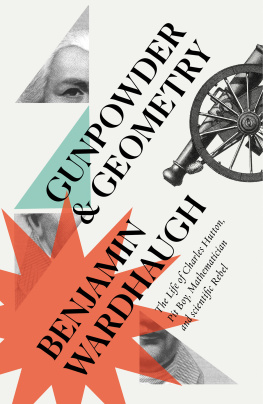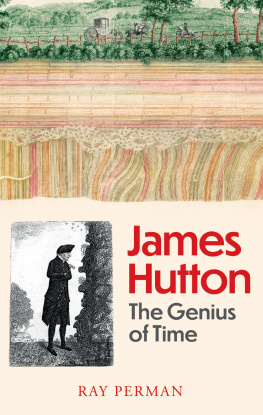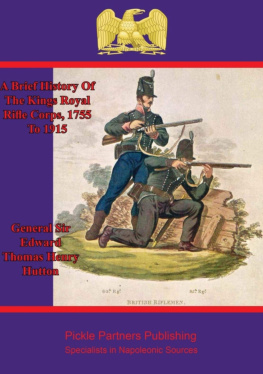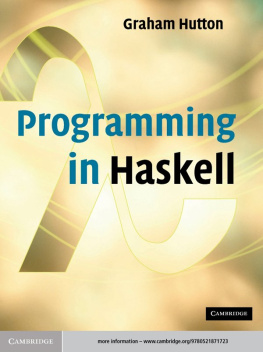Contents
Pages

Contents
In memory of Jackie Stedall
J.R. Boyle, Vestiges of Old Newcastle and Gateshead (Newcastle, 1890), p. 150.
Photograph by the author from a copy in the authors collection.
The Condition and Treatment of the Children employed in the Mines and Collieries of the United Kingdom (London, 1842), frontispiece.
Wellcome Collection. CC BY.
George Fisher, The Instructor (London, 1760), frontispiece.
World History Archive/Alamy Stock Photo.
J. Draper, Young Students Pocket Companion (Whitehaven, 1772), frontispiece.
The Bodleian Libraries, The University of Oxford: (OC) 181. G. 122.
Nathaniel and Samuel Buck, The South-East Prospect of Newcastle Upon Tyne (1745).
Image; Crown Copyright: UK Government Art Collection March 2014.
Charles Hutton, A Plan of Newcastle-upon-Tyne (Newcastle, 1772), detail.
The Bodleian Libraries, The University of Oxford: Gough Maps Northumberland 20.
Paul Sandby, The Royal Military Academy at Woolwich, c. 1770.
Royal Collection Trust/ Her Majesty Queen Elizabeth II 2018.
Thomas Seccombe, Gentlemen Cadets, 1783.
Royal Collection Trust/ Her Majesty Queen Elizabeth II 2018.
Edward Scriven, The Gallery of Portraits with Memoirs (18337), vol. 6, plate between pp. 2021.
The Print Collector/Alamy Stock Photo.
Charles Hutton, The Force of Fired Gun-Powder, and the Initial Velocities of Cannon Balls, Determined by Experiments, Philosophical Transactions 68 (1778), accompanying plate.
Photograph by the author from a copy in the authors collection.
Joshua Reynolds, Sir Joseph Banks, 1773.
The Picture Art Collection / Alamy Stock Photo.
Engraving of Charles Hutton by Charles Knight after Mary Byrne.
Wellcome Collection. CC BY.
Philip Reinagle, Isabella and Camilla Hutton, 1788.
Photograph by Jim Campbell. Reproduced by kind permission of the Vignoles family.
Portsmouth Record Office, Vignoles papers 1072A/App. 10, fol. 1.
Reproduced by kind permission of Portsmouth Libraries & Archives Service, Portsmouth City Council, All rights reserved.
Engraving of Olinthus Gregory by Henry Robinson after Richard Evans.
Science History Images/Alamy Stock Photo.
Engraving of Charles Hutton after H. Ashby.
Science History Images/Alamy Stock Photo.
Thomas Phillips, Sir Joseph Banks, 1810.
Granger Historical Picture Archive/Alamy Stock Photo.
Engraving of Huttons bust after Sebastian Gahagan, 1822.
Chronicle/Alamy Stock Photo.
Andrew Morton, Charles Hutton, c. 1822.
Photograph reproduced by permission of the Newcastle Literary and Philosophical Society.
August 1755. Newcastle, on the north bank of the Tyne. In the fields, men and women are getting the harvest in. Sunlight, or rain. Scudding clouds and backbreaking labour.
Three hundred feet underground, young Charles Hutton is at the coalface. Cramped, choked with dust, wielding a five-pound pick by candlelight. Eighteen years old, he has been down the pits on and off for more than a decade, and now it looks like a life sentence. No unusual story, although Charles is a clever lad gifted at maths and languages and for a time he hoped for a different life.
Many hoped. Charles Hutton, astonishingly, would actually live the life he dreamed of. Twenty years later you would have found him in Slaughters coffee house in London, eating oysters with the president of the Royal Society. By the time he died, in 1823, he was a fellow of scientific academies in four countries, while the Lord Chancellor of England counted himself fortunate to have known him. Hard work, talent, and no small share of luck would take Charles Hutton out of the pit to international fame, wealth, admiration and happiness. The pit boy turned professor would become one of the most revered British scientists of his day.
This book is his incredible story.

Newcastle upon Tyne occupies a fine site for a town: a long south-facing slope, down towards the river. The Great North Road runs through it: 90 miles north to Edinburgh, 250 south to London. And the river joins the town to the world. As the old song goes,
,
Brings bread to me and mine;
Of all the rivers north or south
Theres none like coaly Tyne.
By the time coaly Tyne passes under the bridge at Newcastle it has seen the Pennines and the wild country of Northumbria: land fought over by the Romans and the Picts, the English and the Scots. If the water had once been dyed with their blood, by now it was dyed with coal.
The town was spacious and populous. Only three English towns were bigger; but still Newcastle was no sprawl early in the eighteenth century. Just five main streets within the old town walls, and open country beyond them to east and west.

We know next to nothing about , Eleanor and Henry. Its probable they moved to prosperous, growing Newcastle from elsewhere: possibly from Westmorland, on the other side of the Pennines.
Eleanor and Henry seem not to have prospered in any tremendous way in Newcastle, though neither were they at the bottom of the heap. Henry was : something less, that is, than a land steward or estate agent, and something more than a manual labourer. Viewers were literate, numerate men who kept the collierys records and compared notes with their colleagues at neighbouring mines. They measured and calculated rates of production, kept an eye on how fast the pit was filling with water and how well the pumps were coping. They allocated labour, planned, inspected. Some stayed up at night to catch coal thieves.
Viewers were expected to be down the pits daily, but also to see the estate agent daily. They faced two very different worlds: the wealthy owners and the men who hewed the black diamonds out of the rock beneath their feet. They had responsibility and power; some abused it, keeping owners ignorant about the mine work. Many used their position to command high fees. The coal industry was expanding, and new shafts and new mines depended on the advice of experienced colliery viewers. had their own assistants and apprentices: minor deities in their own field.
One source says Henry Hutton was , a step further up still. We dont know if it was true, and it may just be a garbled reflection of the fact that he oversaw a mine or mines on that noblemans land in Northumberland. Either way, he was a man who had a good deal more than the very minimum.
By 1737 Eleanor and Henry lived with their children three or four boys, perhaps more in a thatched cottage on the northern edge of Newcastle. Nineteenth-century historians would be rather sniffy about themselves it was luxury. Thatch, indeed, was a luxury, as was the ability to live more than a stones throw from the pit mouth.

















